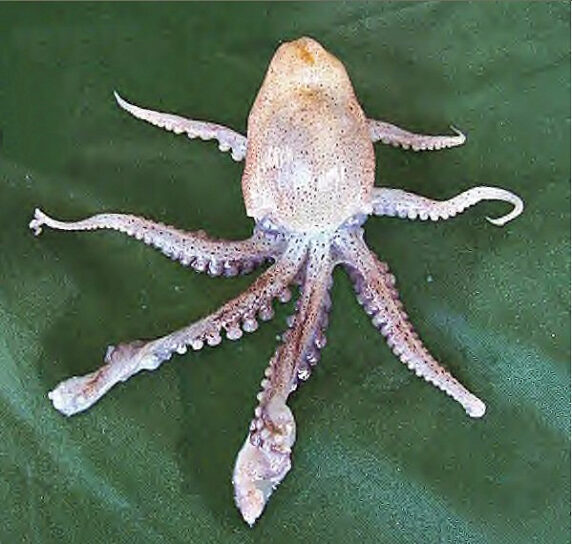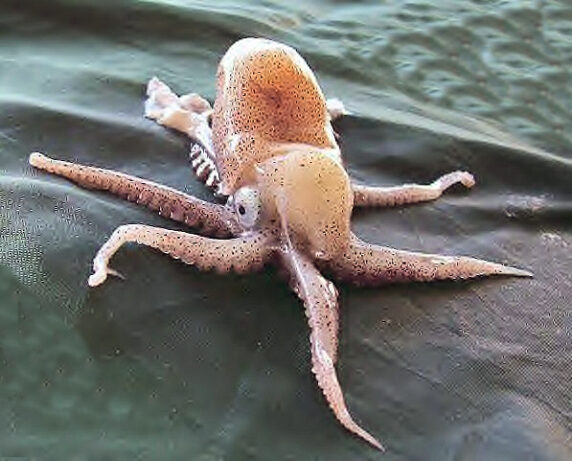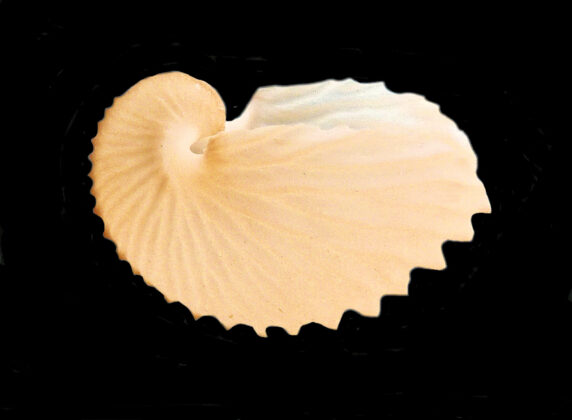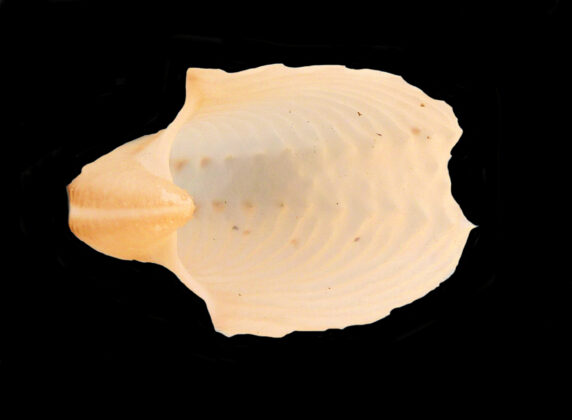Paper Nautilis, Argonauta cornutus



 Paper Nautilis and Shell, Argonauta cornutus. Collected on the beach in its own shell (pictured above) with a brood of one zillion eggs, just above the surf line at Km 21, Cabo Real, Baja California Sur, April 2004. Size: 10 cm (3.9 inches). Shell 4.2 cm (1.7 inches) x 2.8 cm (1.1 inches). Note: in collection of this species, I was fooled badly, originally believing that a standard octopus had taken up residence in a discarded shell. Only when I removed the “octopus” from the shell did I discover the brood of eggs. An excellent photo opportunity was lost! I also collected two additional Paper Nautilus shells adjacent to this collection, but both shells were empty.
Paper Nautilis and Shell, Argonauta cornutus. Collected on the beach in its own shell (pictured above) with a brood of one zillion eggs, just above the surf line at Km 21, Cabo Real, Baja California Sur, April 2004. Size: 10 cm (3.9 inches). Shell 4.2 cm (1.7 inches) x 2.8 cm (1.1 inches). Note: in collection of this species, I was fooled badly, originally believing that a standard octopus had taken up residence in a discarded shell. Only when I removed the “octopus” from the shell did I discover the brood of eggs. An excellent photo opportunity was lost! I also collected two additional Paper Nautilus shells adjacent to this collection, but both shells were empty.
The Paper Nautilis, Argonauta cornutus (Conrad, 1854), is Cephalopod and one of three members of the Argonautidae Family of Argonaut Shells found in Mexican waters of the Pacific Ocean, that are known in Mexico nautilis de Papel. Their shell is elliptical in outline and thin, fragile, one-chambered and involutely coiled that is yellowish-white to tan in color with a finely granulated texture having a depth that is 57 to 61% of its length. The spines and part of the spire are dark brown. Their keel is broad and they have two elongated axial expansions. They reach 9.4 cm (3.7 inches) in length; 7.5 cm (3.0 inches) in width; and 5.6 cm (2.2 inches) in height being not as wide as tall with females being significantly bigger than males. The body of the Paper Nautilis resembles an Octopus of the Octopodidae Family. They live a pelagic existence and are found just below the surface. They are dimorphic with separate sexes. The females generate a calcareous egg chamber that resembles a shell; the males are about one-third the size of the females and are free swimming without a shell.
The Paper Nautilis is a pelagic species spending its entire life at sea, near the surface of the open seas, at depths up to 21 m (70 feet). found in all Mexican waters of the Pacific Ocean with the exception of the west coast of the Baja. They are rarely seen by humans but their shells are known to wash up on coastal shores following grande chubascos. They are vertical migrators that move to the shelter of the bottom at night and move toward the surface at night for feeding. They have eight tentacles, two of which are unique, and web-like, used to collect food. The male can be differentiated from the female by the existence of an altered third tentacle (the hectocotylus) that it keeps in a pouch until it is needed for reproduction. Following fertilization, the male will die.
The Paper Nautilis is easily confused with Noury’s Argonaut, Argonauta nouryi (more elliptical with a depth that is 53% to 57% of length) and the Pacific Argonaut, Argonauta pacifica (larger more rounded with a depth that is 56% to 60% of its length).
Synonyms include: Argonauta conradi and Argonauta nouryi.
The Paper Nautilis is has global distribution. In the Eastern Pacific they range from Southern California to Peru and are found in all Mexican waters of the Pacific Ocean.
The Paper Nautilis Shell is considered to be and highly sought after by shell collectors.